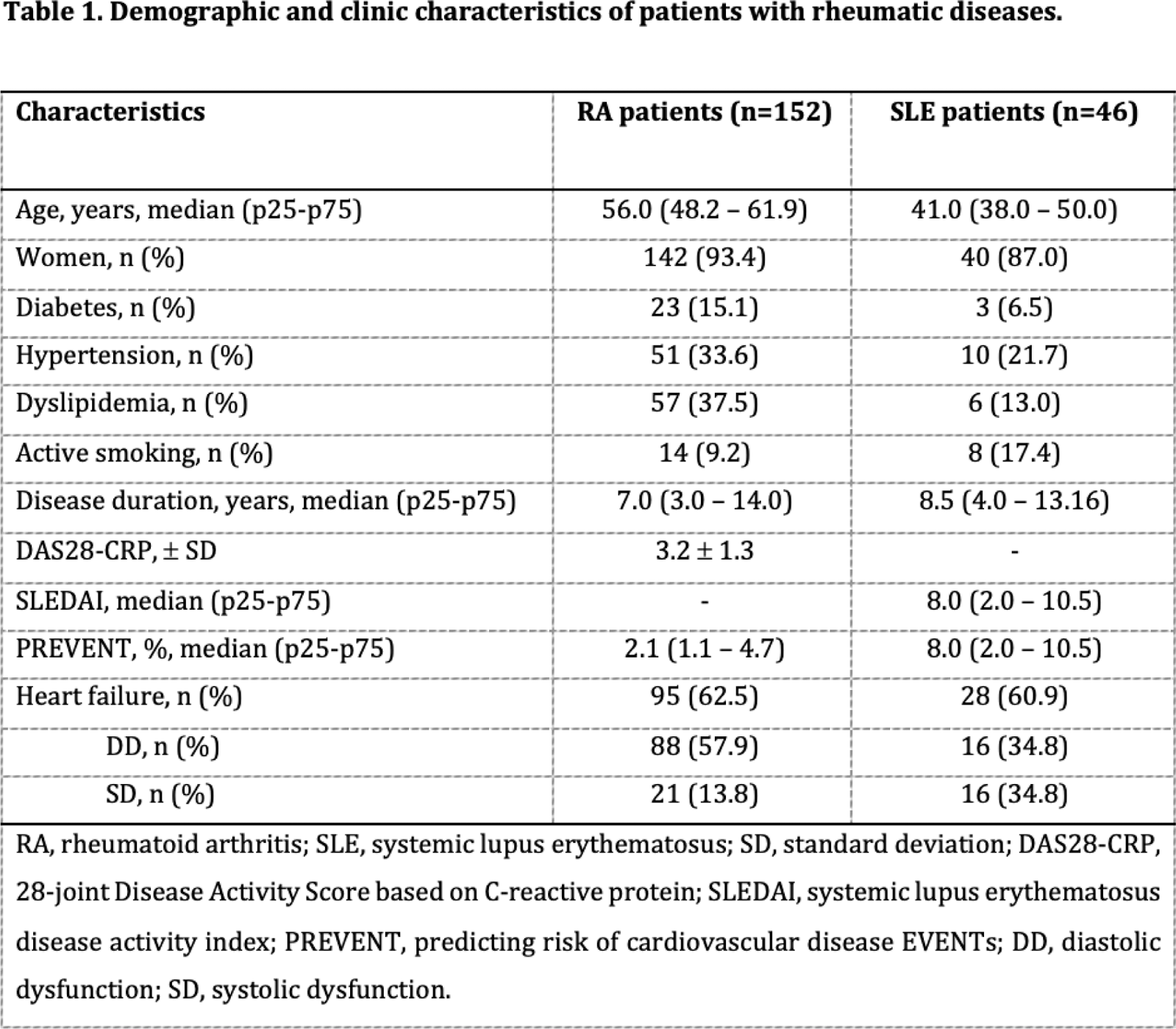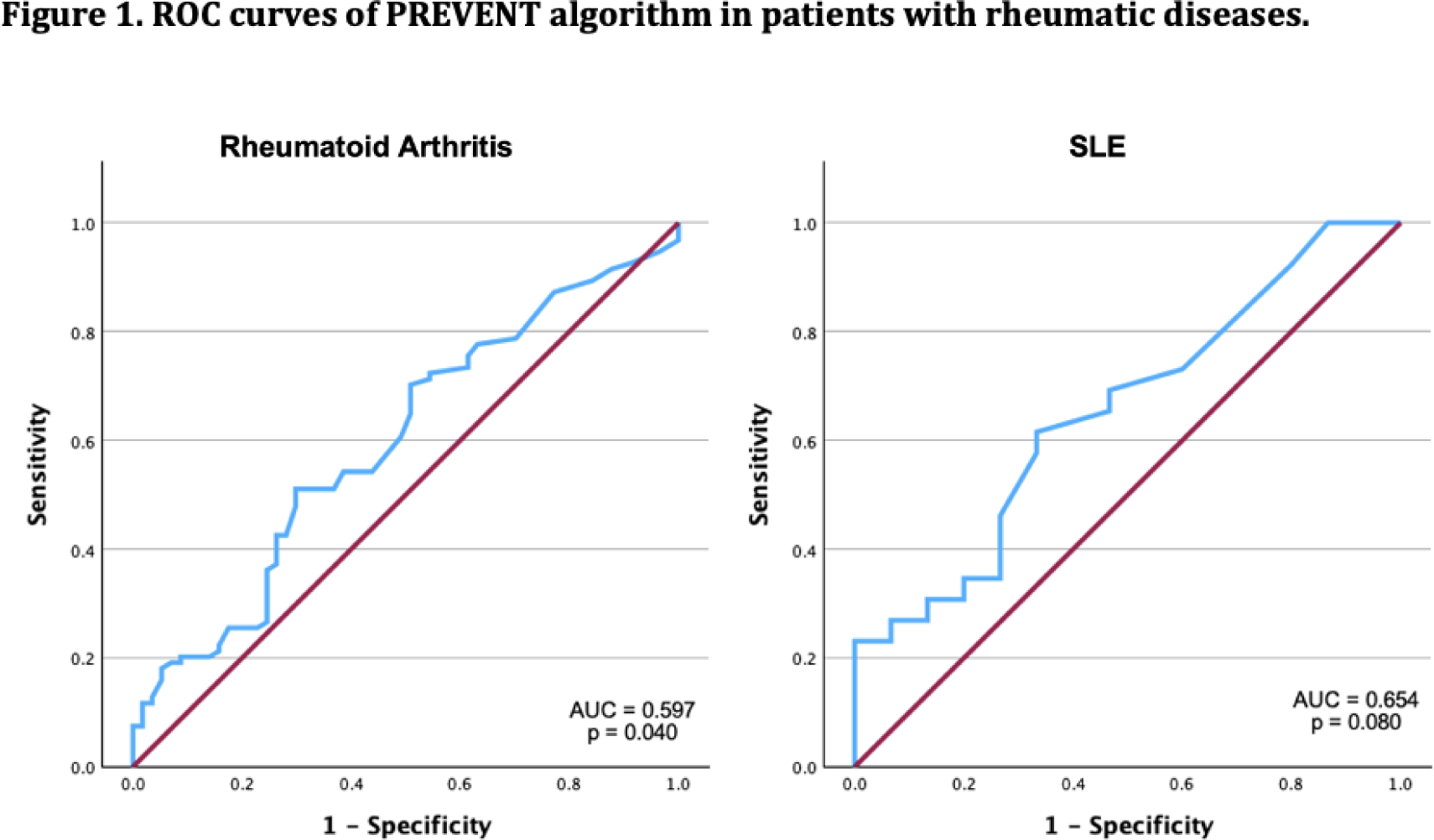

Background: Rheumatic diseases have a higher risk of heart failure compared to the non-rheumatic population. Several cardiovascular risk (CVR) algorithms are used to predict cardiovascular outcomes, but none of them provide heart failure risk among this population. The predicting risk of cardiovascular disease EVENTs (PREVENT) calculator uniquely estimates atherosclerotic disease and heart failure risks, offering a cost-effective approach to population health.
Objectives: To evaluate the performance of PREVENT in detecting heart failure in patients with rheumatic diseases.
Methods: A cross-sectional, descriptive study of patients aged 30-79 years who met the ACR/EULAR 2010 classification criteria for RA or the ACR/EULAR 2019 classification criteria for the diagnosis of SLE. Patients with previous cardiovascular disease (myocardial infarction, stroke, or peripheral artery disease) were excluded. Prediction of heart failure (HF) risk using the PREVENT algorithm. Transthoracic echocardiography was performed by one certified cardiologist blinded to clinical information. HF was defined according to the presence of diastolic (DD) and systolic dysfunction (SD) based on the guidelines of the American Society of Echocardiography. A ROC curve analysis was performed to evaluate the performance of the PREVENT algorithm for detecting HF in each rheumatic disease. The Youden index was calculated to select the optimum sensitivity, specificity, and negative and positive predictive values. A value of p ≤0.05 was considered statistically significant.
Results: A total of 198 patients with rheumatic disease were included, divided into two groups, 156 RA patients, and 42 SLE patients. The prevalence of HF was 58.08%. Demographic characteristics and results are shown in Table 1 and Figure 1.
Conclusion: In our study, the PREVENT algorithm performed poorly in detecting heart failure in RA patients. In SLE, the algorithm does not seem to work. Further prospective studies with larger numbers of patients are needed to evaluate the prognostic utility of the new cardiovascular algorithm, PREVENT, for predicting heart failure outcomes in patients with rheumatic diseases.
REFERENCES: [1] Khan SS, Coresh J, Pencina MJ, et al. Novel Prediction Equations for Absolute Risk Assessment of Total Cardiovascular Disease Incorporating Cardiovascular-Kidney-Metabolic Health: A Scientific Statement From the American Heart Association. Circulation 2023;148(24):1982-2004.


Acknowledgements: NIL.
Disclosure of Interests: None declared.